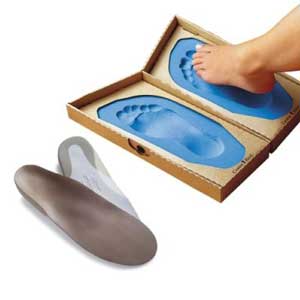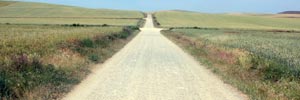
The Best Trail Walking Shoes
Tips on choosing the one best for you?
Shoes are a special class of walking paraphernalia. They serve as part of the wardrobe, but also have the technical functions of gear. Selecting proper footwear for any purpose is always important. For long-distance walking, it’s critical. It’s not often an easy task because everybody’s feet are different, and often the right is quite different from the left. What’s essential is finding the right shoe for you, which involves balancing a number of important factors. Very few hikers I’ve met claim to have slipped into a pair of shoes and walked away effortlessly. I know I’m not one of them.
Hiking boots, walking shoes, trail runners, sandals – whatever you prefer, you’ll live with your choice day after day after week after month. The right choice makes walking fun; a wrong choice can lead to tortuous, even dangerous days on the trail.

Shoes serve many important functions as the primary part of an entire footwear system, which also includes insoles, socks, and laces, plus various methods and supplies to maintain excellent, healthy, functioning feet.
The bad news, if you live in my parallel universe, is that most shoes with attractive styling don’t fit me well, and those that do have some bizarre style or crazy color. With cultural walking, you need to not only have good protective footwear on the trail, but be as presentable as possible in towns and restaurants. Here are some tips on what to look for in a versatile long-distance walking shoe, and choosing the best one for you.
Fit
Clearly, it all starts here. If the shoe doesn’t fit it won’t work. Long-distance walking changes your feet. They tend to flatten out and lengthen. One suggestion is to try on shoes late in the afternoon, as feet tend to swell over the course of the day. Better yet, try on shoes after walking several miles. Wear the type of socks you prefer when shopping for shoes, as well as a custom insole if you plan to wear them. (See more about insoles below).
Get your feet measured properly by the sales person. Be sure to stand up while being measured. Make a note of all the measurements. If you shop elsewhere for shoes, take these figures with you for comparison.
Walk around the store for as long as possible. Try to find an incline you can use to test the fit, both uphill and especially downhill. Stand on the ramp and bounce around. If you can, try this while wearing a weighted backpack. If you feel any movement, especially if your forefoot slides forward, the shoes don’t fit.
Your heel should be held in place. Any movement, especially vertically is a fantastic way to grow blisters. The toe box should have ample room to wiggle your toes slightly without your foot sliding about. The “width” a shoe does not come from a wider sole, it comes from a fuller cut of the upper. A little bigger upper lets it spread out around your forefoot. I find it hard to find a shoe that’s too wide. The symptom is that the top will bunch or pucker when you lace them up.
Ask the salesperson plenty of questions. It’s obvious when they give an answer and don’t know what they’re talking about. Take your time. If you don’t have much experience with hiking shoes, find a vendor with experienced salespeople. It’s not worth saving a few dollars at a discount store to buy shoes that aren’t as good for you as they could be. A good shoe store will be equipped to make minor adjustments (mostly selective stretching) to improve fit.
One issue is the range of materials that are used. Most leather shoes will stretch over time as you break them in. This loosening of the leather happens at the places where your feet force against the shoe. Many synthetic shoes don’t tend to stretch as much, and the variety of different materials used in them (sometimes combined with leather), tend to stretch different amounts under different conditions. Moisture (on the outside or inside) and temperature, change the shape of synthetic shoes during the day, compared to how they were when you laced up in the morning.
Height
Good trail shoes can be either below the ankle, across the ankle, or above the ankle (to various heights). Many ultralight backpackers swear by low cut shoes, such as trail running shoes. The lightest weight shoes are all this type. One of the advantages of ultralight backpacking is that you don’t need as heavy a shoe to support the pounding that a heavier pack causes.
Taller shoes may limit the range of motion of your ankle and foot, making your gait less fluid than smoothly rolling heel to toe over the ground. If you prefer below ankle shoes, be sure the shape of the ankle cut-out doesn’t rub against your skin.
The main advantage I’ve found with a mid-height shoe (or low-cut boot), is that it can help lock your foot in place, especially the heel. This is most helpful in steep descents, where a lower shoe may let your foot plunge forward, forcing your toes toward the front of the shoe. The hole pattern of a shoe and lacing technique can help mitigate this in low-cut trail shoes.
Insoles
The insole of virtually all trail shoes is removable. They tend to be slim and not very supportive. Their design is a best guess at what will fit a “normal” foot, but no one’s foot is really “normal” and hiking day after day is not a “normal” activity.
You may already have custom orthotics. For the rest of us there are other choices. A variety of athletic insoles are available that give better support and cushioning, and improved stability than the insoles that come with most shoes. Two of the best known and most popular are Superfeet and Spenco
.
Arch support is very important and needs to hold up against the tendency of feet to flatten out after many miles on the trail. Good insoles should prevent or correct overpronation, where the foot rolls inwards and the arch flattens. This common condition can lead to shin splints, plantar fasciitis, bunions, achilles tendonitis, and other painful symptoms.
Learn about insoles – there are many different designs – and if you need them, get a pair before you settling on your shoes. You may need to try a few kinds to see what works best. They vary in width and thickness, and may affect the fit of your shoes. Some commercial insoles are cut large and need to be trimmed. Remove the pair that came with your shoes and trace around them on your aftermarket insoles, and cut off any excess to get a good fit.
Among the types of insoles that provide an even better fit are heat moldable products, like these from Sof Sole. You warm them up, stand on them, and the material reshapes to align with your feet and arch. After they cool down, they maintain the custom shape.
The best choice I’ve found is ArchCrafters Custom Fit Insoles, which I’ve used with great success for several years.

They send you a special foam-filled box that you stand in, creating a precise mold of your feet. A couple of weeks after mailing the box back, you receive your own unique insoles. They’re beautifully made, rugged, and long-lasting.
: : TIP >>> After purchasing several pairs of ArchCrafters, I’ve learned a few things about the process that aren’t clearly explained in the directions. These are my suggestions: You mold each foot separately. The foam is much less dense than you’ll probably expect. Have someone to help you. Prepare by standing straight with your feet comfortably apart – your normal standing posture. Have something to hold you steady, if necessary. When you’re ready, lift your foot straight up, enough to allow your assistant to slide the box under your foot and hold it box firmly to the floor as you step in. Press your foot down slowly but firmly, returning to your original posture with your weight balanced on both feet. Remember the foam is very delicate. Your foot will sink to the bottom of the box. Pull your foot straight up, being careful not to rock or move it about the foam. Repeat with other foot. It may seem like you didn’t do it correctly, but I’ve always received insoles that seem to work perfectly, even when I though I might have messed up.
At about 100 bucks, they’re a much better deal, with a surer fit, than other over-the-counter options. They may, in fact, be cheaper than trying two or three different brands that don’t quite make the grade. Highly Recommended by Longwalking.
Outsoles
The outsole is the bottom of the shoe that has direct contact with the ground. The most important role it has is to provide good traction on any surface. This is achieved by the material used, usually some type of rubber, and the pattern of tread or lugs. Along wit the midsole, It needs to protect you from pain caused by stepping on sharp rocks.
I have tried many shoes that fit well, and were otherwise satisfactory, but had poorly performing outsoles. On a long-distance walk, you cover a very wide variety of surfaces under numerous conditions. Your shoes should rarely slip. Some surfaces are inherently slippery, like wet moss on rocks, or fine sand on hard steep rock, but on most surfaces, wet or dry, your outsoles should provide secure grip and traction. I’ve tried shoes that were slippery on worn, rainswept granite, cobblestones or asphalt. That’s unacceptable.
Overall, I’ve had the best luck with shoes that come with Vibram soles. Vibram S.p.A. is an Italian company that makes a wide range of rubber outsoles that are used by many manufacturers. I’ve felt secure in every pair of boots or shoes I’ve ever walked in that had Vibram soles. All else being equal, I’d choose shoes with Vibram soles over anything else.
On the other hand, one brand that has consistently slippery soles in my experience is Keen. I like the wide toe box for dry around town use, but I think they’re dangerous on the trail.
Some shoe companies produce shoes without Vibram soles, but with excellent “stickiness”. One such manufacturer is GoLite, which makes some of the very lightest shoes available.

I’ve had excellent results with their shoes. For our 2011 longwalks in France and Spain, we’re currently testing the GoLite Men’s Comp Trail Running Shoe, pictured at the top of the page. (Here’s the GoLite Women’s Comp
version). The other shoe under consideration is GoLite’s Pak Lite Hiking Boot
, shown here at left. I’ll be crossing some steep terrain and want to test this slightly heavier shoe, especially for keeping my forefoot secure. Final choice: TBD.
One other comment about outsole traction. There is a relationship between the excellence of traction and the longevity of the rubber. Soles with better traction tend to wear out faster. Besides the outsole, other parts of lightweight shoes also degrade over time and distance, even if they appear to be intact, such as the midsole. The foam can harden and stop giving the cushioning you paid for. I’ve found that most of the shoes I’ve worn on long ultralight pack trips need to be replaced about every 1,250 kilometers (800 miles). When you find a pair of shoes you like, consider purchasing a backup pair that you can have sent to you from home.
Waterproofness
Whether or not you need waterproof shoes is another source of debate. Shoes can be made lighter without a waterproof membrane, and many hikers claim they dry out quicker when they do get wet.
I prefer waterproof shoes. Moisture is one of the factors that can cause blisters. It also effects the stretchiness of the different components and materials of the shoe. In cool or cold weather, my toes stay warmer. Mesh shoes let more dust into the shoe, which gets trapped in your socks, lowering their ability to wick moisture from your feet, making them harder to launder (remember – you’ll be doing this every evening), and it shortens their useful life. Again, this is an area of wide opinion, but something you should consider and decide for yourself.
Summary
Choosing the pair of walking shoes that’s best for you can be a challenging, time-consuming task. It makes no difference what any given review says about, “fitting like a glove”, or, “most comfortable shoe I’ve ever worn”. They have to fit you. Different manufacturers have reputations for making shoes with “wide toe boxes”, or, “sized on the big side”, and other variations. Researching and selecting shoes is one of the first things you should do in preparing for a long walk. If you find yourself with a pair that seemed good at the store but proves unworthy after a day on the training trail, find something else. There is no substitute for the right shoe. Good shoes make happy feet, which make happy hikers.
UPDATE : : One of my favorites during the 2010 trial and testing season is the GoLite Men’s Comp Trail Running Shoe. Waterproof, great traction, and only 11 ounces per hoof!





July 12th, 2014 at 19:18
Great tips (that i need!). i’m on my 2nd pair of shoes and have been fighting blisters for the last several months preparing for a walk around California’s Salton Sea next summer.. Need something very light and very cool (temps will be in the 115°F range) so i’m going with non-water proof.. Need boots in some areas and shoes in others..
Also learning the value of Leukotape!